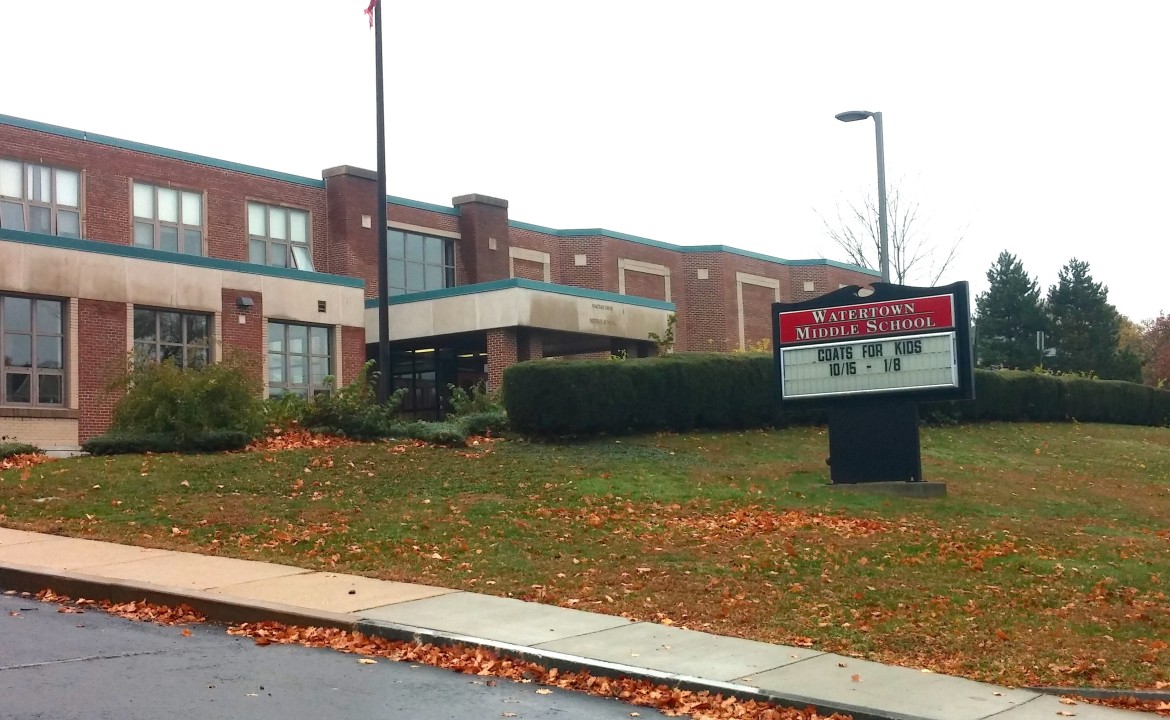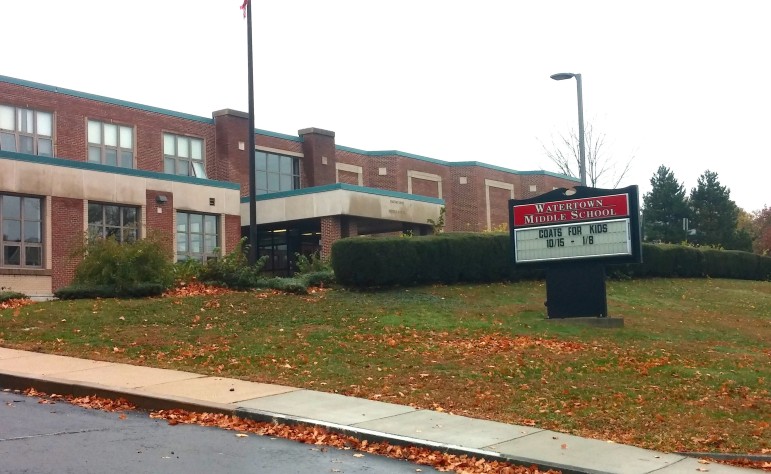
Monday night, the School Committee heard about the strategies being used in the Watertown Schools that led to improvements for the town’s schools on the 2019 MCAS test.
The Watertown Schools have made an effort to use data to drive lessons and to address weaknesses in classrooms and even for individual students, said Theresa McGuinness, the district’s Assistant Superintendent for Teaching, Learning & Assessment.
“Student performance data is used to identify areas of strength and areas of opportunity, as a district, grade level, cohort and individual in English Language Arts (ELA), mathematics, and science,” McGuinness said.
She added that the MCAS data is used in conjunction with other assessment tools used in the Watertown Schools. They can help teachers create targeted instruction and intervention, if a student needs extra help.
Another part of the success, McGuinness said, is the work to align what is being taught in the classroom with the types of questions being asked on the MCAS test.
Watertown now has six teaching coaches, four at the elementary schools and two at the middle school, who work with teachers on math and reading. McGuinness said they have been a success at the elementary schools, and this year coaches were added at the middle school. If the budget allows, she would like to expand the program.
“Maybe we will ask for individual coaches (in each subject) at each school,” McGuinness said. “Two coaches were shared by Lowell and Cunniff.”
At the Oct. 8 meeting, Superintendent Dede Galdston reported the district MCAS results, and noted that most of the schools showed improvement over 2018. In particular, she pointed to Hosmer Elementary School for being recognized by the state as School of Recognition for High Growth, and that the Watertown Middle School students improved enough to lift the school out of the Not Meeting Expectations category.
Improvement at the Middle School
WMS Principal Donna Martin presented the school’s Turnaround Plan, which it has to submit to the state Department of Elementary & Secondary Education (DESE).
Martin said the school has a group of faculty and staff, called the Instructional Leadership Team, which met over the summer to start to tackle the issues. They came up with four Turnaround Practices:
- Leadership, Shared Responsibility, and Professional Collaboration
- Intentional Practices for Improving Instruction
- Student-Specific Supports and Instruction to All Students
- School Culture and Climate
The school also has other teams to look at areas such as school culture, data and curriculum development.
WMS is working with the instructional coaches in math and reading, which were added this year, Martin said. Also, teachers will be observed in the classroom to see how they are adapting to the instructional focus.
The strategies are being passed all the way from the top down to the students. The school has learning targets which they put into language the students can understand, such as compare and contrast, analyze, and collaborate, Martin said.
“They unpack the learning targets and make sure students know what the words mean,” Martin said. “At the end of the year (the students) will be able to assess themselves to see if they met the target.”
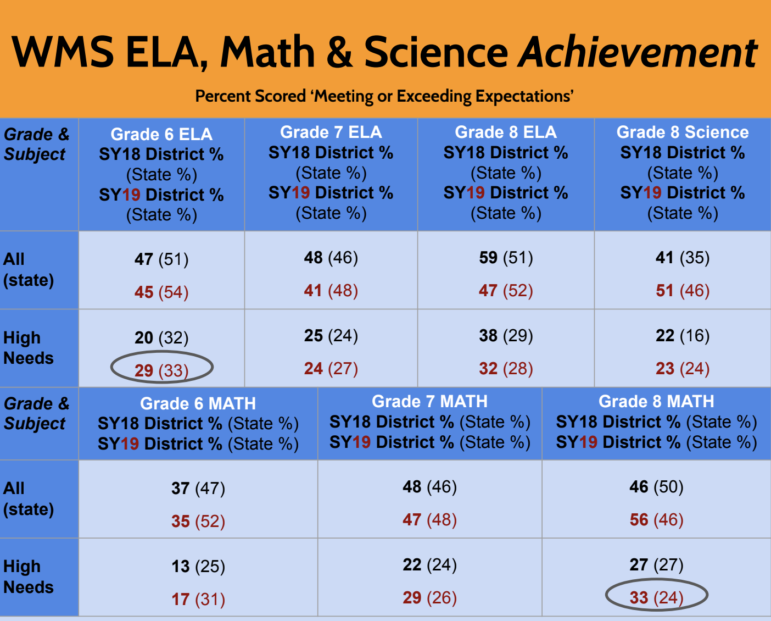
The Middle School also looked to reduce the number of tardies and suspensions. Rather than focusing on disciplining students, Martin said, they will look at ways they can work with students in the classroom to change behavior.
In addition, teachers will make more effort to reach out to students’ parents. This is not just for disciplinary issues but to establish communication with parents of all students, Martin said.
(See the Watertown Middle School results by clicking here).
Elementary Schools
School receive scores of 0-4 on their achievement and progress toward the goals in math, English Language Arts, science and chronic absences. The scores are given for “All Students” at the school and for “Lowest Performing Students.”
Students at Cunniff School scored well in math, 3s and a 4, but struggled in English and science, where there were some 0s. Principal Mena Ciarlone said the faculty is working on finding ways to improve the results.
“We regularly collect, analyze and use data to inform the need for reteaching core concepts and skills,” Ciarlone said.
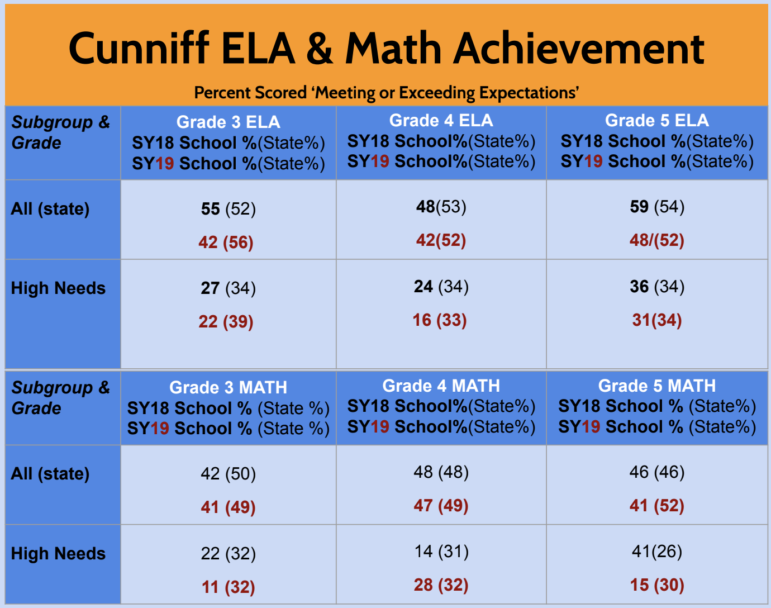
Cunniff is also working with the district’s Title I tutors. These positions are funded by the state, which are provided to schools with high percentages of at-risk students, such as low income and those who don’t come in speaking English.
Also, she plans to have the tests given to one grade level at a time, which she said will create an environment where the students feel more comfortable while taking the test.
(See the Cunniff Elementary School results by clicking here).
Hosmer School had the standout results in 2019, with 4s in all subjects for achievement and goals for All Students, and 4s and 3s in the Lowest performing students.
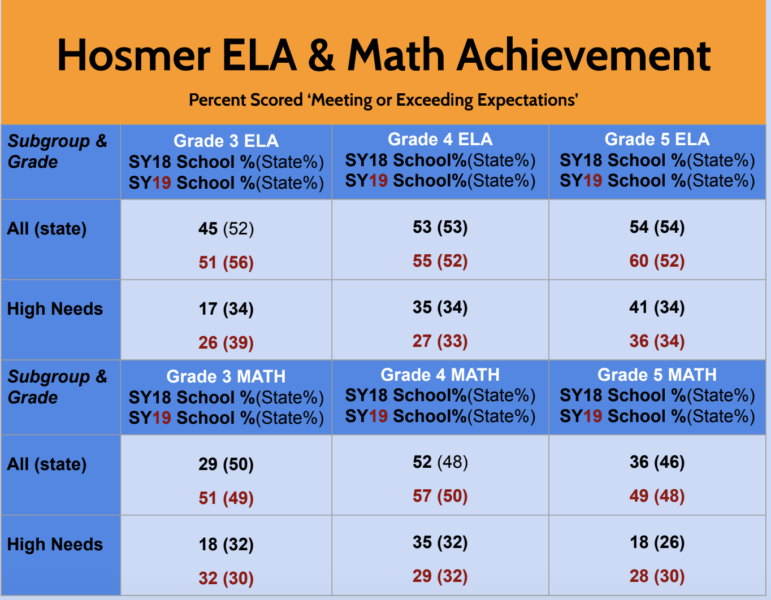
The school also scored above the state in most area, and Principal Erin Moulton said one of the highlights was that the growth was not just seen in the All Students scores, but also in the Lowest Performing students.
“It is a morale booster and energizer,” Moulton said.
(See the Hosmer Elementary School results by clicking here).
Lowell School scored 4s and 3s in all subjects for both All Students and Lowest Performing students. The school also outperformed the state average on all tests for All Students, including scores in the 70s for two groups: 76 in third grade ELA and 77 in fourth grade math
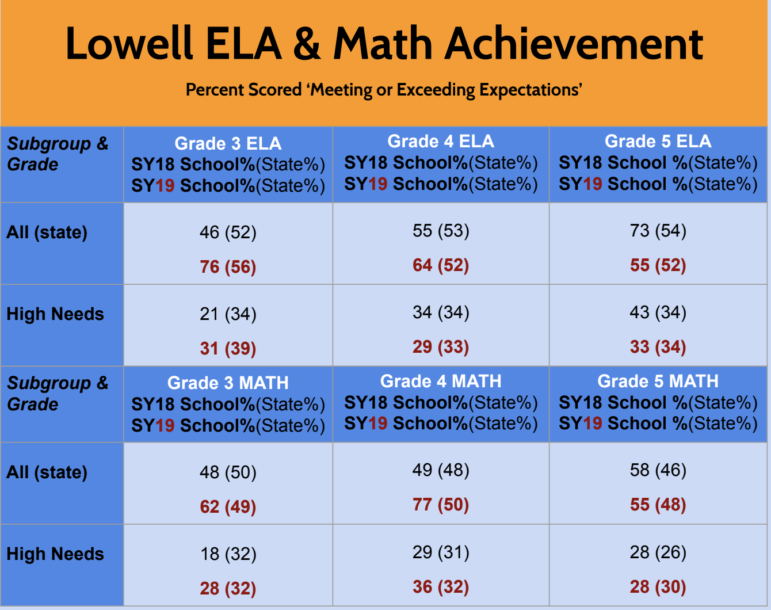
Lowell Principal Stacy Phelan said that the improvement was seen at all levels, adding that “rising tides lift all boats.”
“We celebrated that all students, regardless of subgroup, exceeded targets for ELA and math,” Phelan said.
(See the Lowell Elementary School results by clicking here).
High School Results
At the High School level, students took the new generation MCAS for the first time in most subjects in 2019, and they took the legacy test for science.
The high school got scores of 3 and 4 (out of 4) on the achievement and goals in the “all students” category. WHS, however, got only one 3 in the “lowest performing students category,” and struggled with chronic absentee (1 for all students and 0 for lowest performing students).
“I assure you there are not a lot of students that are chronically absent,” said Watertown High School Principal Shirley Lundberg. “It is a few students with complicated situations who have a lot of absences.”
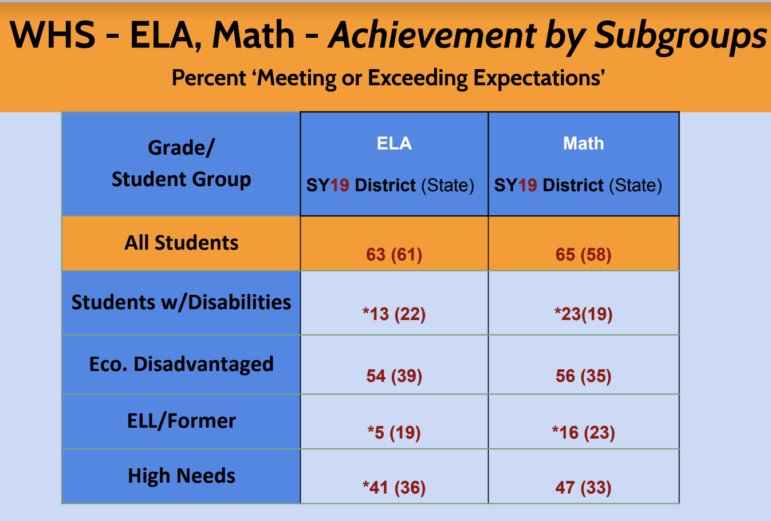
Looking at other standardized tests, WHS students have made some progress, Lundberg said. In 2019, 84 percent of students who took Advanced Placement tests scored 3 out of 5 or higher (which is considered passing and can earn college credits) and 54 percent got 4 or 5 on the test. This is up from 74 percent and 44 percent, respectively, in 2018.
The mean score on the SAT was higher in math in 2019 than 2018, and the was equal in Evidence Based Reading and Writing. The percent of students taking the SAT, however, dropped from 85 percent to 75 percent.
In 2018, the school started having all students take the PSAT. The exam was taken during school, and the school pays for part of the fee.
(See the Watertown High School results by clicking here).
View the MCAS presentation with school-by-school data by clicking here.
